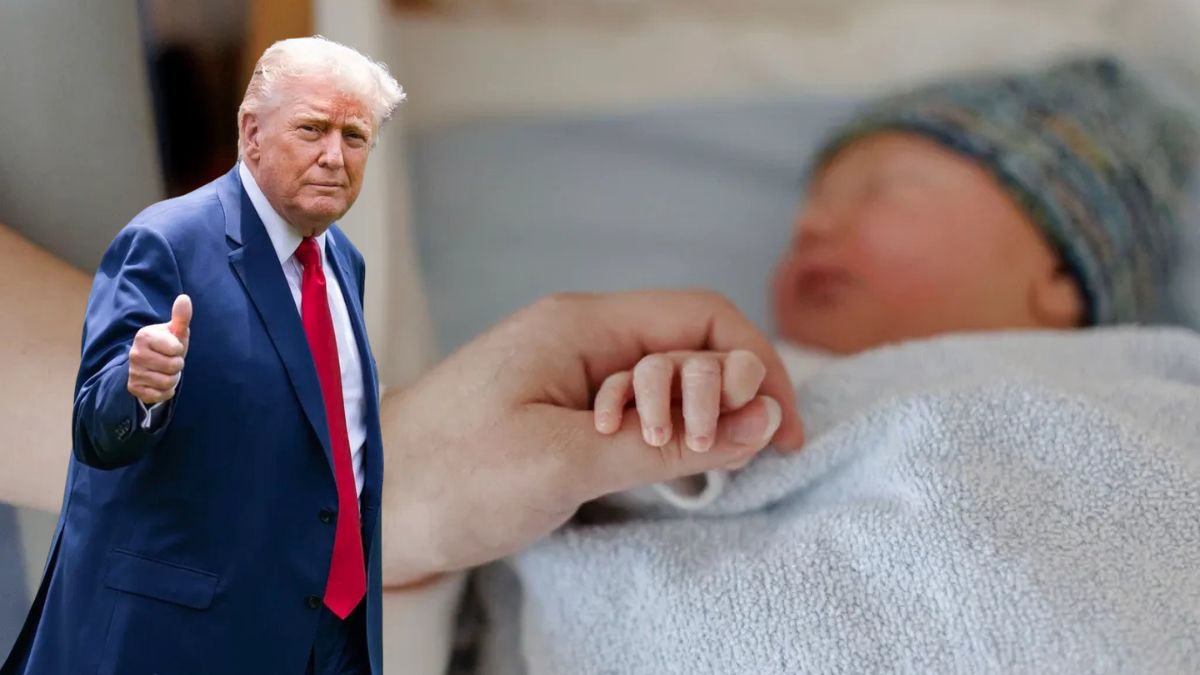A groundbreaking proposal backed by former President Donald Trump is gaining momentum in Washington—and it could significantly change how Americans begin saving for their children’s future. If passed, the plan would give every baby born in the United States between 2025 and 2028 a \$1,000 Investment Account, funded by the federal government.
Part of a broader legislative package known as the One Big Beautiful Bill, this proposal—often referred to as “Trump Accounts”—aims to help children build long-term wealth from the moment they are born. The bill passed the House of Representatives and is currently being reviewed by the Senate.
Newborn Investment Accounts (How the Plan Works)
Under the proposed legislation, every baby born in the U.S. from January 1, 2025, through December 31, 2028, would receive a \$1,000 deposit into a federally managed investment account. The funds would be invested in stock market index funds, offering long-term growth potential.
Here’s a quick look at the key features:
| Feature | Details |
|---|---|
| Initial Government Deposit | \$1,000 |
| Eligible Birth Years | 2025–2028 |
| Family Contributions | Up to \$5,000/year |
| Investment Type | Stock market index funds |
| Tax Benefits | Tax-deferred growth |
| Ownership | In the child’s name |
Parents would also be allowed to contribute up to \$5,000 annually, further accelerating the potential growth of the account. Withdrawals would be allowed in adulthood, giving children a strong financial foundation for college, buying a home, or starting a business.
Why the Plan Was Introduced
The primary goal of the Trump-backed investment account is to provide all American children with a fair financial start, regardless of income level. By establishing savings from birth, the plan promotes wealth-building through compound interest, financial literacy, and future independence.
Supporters of the plan include high-profile business leaders like:
- Michael Dell (CEO of Dell Technologies)
- David Solomon (CEO of Goldman Sachs)
- Dara Khosrowshahi (CEO of Uber)
They argue that giving every child access to long-term investment tools could help address generational wealth inequality and reduce reliance on student loans and credit card debt.
What Could the Account Be Worth by Adulthood?
While \$1,000 may not seem like a large sum, compound interest over time can significantly increase the value of the account—especially when paired with annual family contributions.
Here’s what the projections show:
- With no extra contributions and a 7% average annual return:
- ~\$3,380 by age 18
- ~\$7,600 by age 30
- With annual family contributions of \$5,000 for 18 years:
- Over \$150,000 depending on market performance
These figures demonstrate how even small initial investments can provide a strong financial head start if nurtured properly over time.
Concerns and Criticism from Lawmakers and Experts
Despite bipartisan interest, the proposal has sparked criticism from some lawmakers and financial experts. Key concerns include:
1. Disproportionate Benefit for Wealthier Families
Critics argue that higher-income families are more likely to take full advantage of the \$5,000 annual contribution allowance, potentially widening the wealth gap rather than narrowing it. Lower-income families, meanwhile, may not be able to contribute anything beyond the initial government deposit.
2. Cost to Taxpayers
With an estimated 3.6 million babies born annually in the U.S., the base program would cost \$3.6 billion per year just for the government’s initial deposit—excluding tax deferral benefits or management costs. Some opponents suggest that this money could be better spent on healthcare, early childhood education, or food security programs.
3. Universal Approach vs. Targeted Support
Unlike other proposals like state-run baby bonds, this plan does not consider family income. Every eligible baby would receive the same amount, whether born into a wealthy household or a low-income one. Some lawmakers believe a means-tested approach might provide more equitable outcomes.
What Happens Next? (Legislative Timeline and Launch Date)
The Trump Accounts are just one component of the larger One Big Beautiful Bill, which has passed the House of Representatives and is now under review in the Senate.
If the bill passes both chambers and is signed into law, the first investment accounts could be created as early as January 2026, for babies born in that year.
Notably, the plan would be automatic—parents would not need to apply. The federal government would set up and fund the accounts on behalf of eligible newborns, streamlining the process and ensuring universal participation.
How the Plan Could Reshape Family Finances in America
If implemented, this program could become one of the most significant federal efforts to boost childhood savings in U.S. history. Unlike existing 529 plans, custodial accounts, or trusts, these accounts would be federally backed, standardized, and accessible to every child born during the four-year eligibility window.
Supporters believe it would:
- Promote financial literacy and early savings education
- Provide a strong financial cushion for young adults
- Reduce future reliance on student loans and debt
- Help break the cycle of intergenerational poverty
But much will depend on how the program is funded, how the accounts are managed, and whether it becomes a long-term national policy or a short-lived experiment.
Frequently Asked Questions (FAQs)
1. Who will receive the \$1,000 Trump Account?
All children born in the United States between January 1, 2025, and December 31, 2028 will automatically receive the investment account, regardless of income level.
2. Do families need to apply for the account?
No. The process is automatic. If the bill passes, every eligible baby will be assigned an account with the initial deposit from the federal government.
3. Can families contribute to the account?
Yes. Parents or guardians can contribute up to \$5,000 per year to help the investment grow even more over time.
4. When can the money be accessed?
The account is intended for long-term growth. While final rules are still being debated, the funds would likely be accessible when the child reaches adulthood.
5. Will the earnings be taxed?
No. The account will benefit from tax-deferred growth, meaning investment returns will not be taxed until withdrawn, and possibly not even then depending on the final structure.









